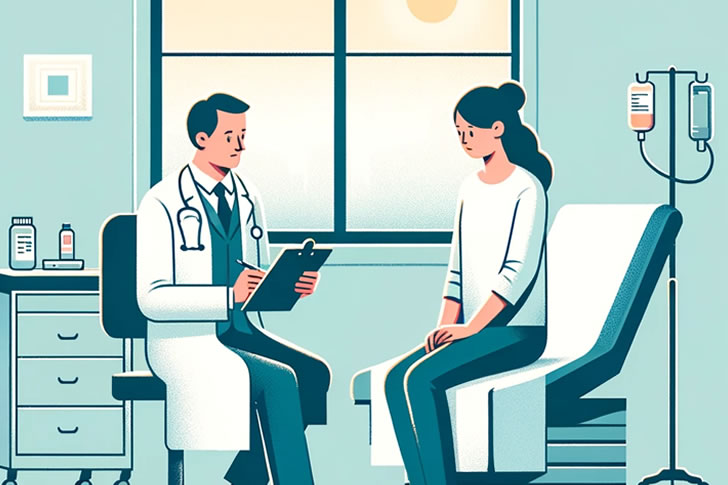Signals of Crohn’s You Shouldn’t Ignore but Most People Do
Crohn’s, a type of inflammatory bowel disease. Characterized by chronic inflammation of the gastrointestinal tract, Crohn’s can cause a range of symptoms that significantly impact quality of life. This article explores the signal of Crohn’s and current USA management.

What is Crohn’s Disease?
Crohn’s disease is a chronic inflammatory condition that can affect any part of the gastrointestinal tract from the mouth to the anus, although it most commonly affects the end of the small bowel (the ileum) and the beginning of the colon. The inflammation caused by Crohn’s disease often spreads deep into the layers of affected bowel tissue, which can be painful and debilitating, and sometimes leads to life-threatening complications.
Symptoms of Crohn’s Disease
The symptoms of Crohn’s disease vary depending on the part of the gastrointestinal tract affected, and they can range from mild to severe. They typically develop gradually, but sometimes will come on suddenly, without warning. Common symptoms include:
- Diarrhea: Often the first symptom that people notice, which can be severe and bloody.
- Abdominal pain and cramping: This can be especially pronounced after meals.
- Fatigue: Many people with Crohn’s disease experience a significant lack of energy.
- Weight loss: Unintended weight loss can occur, partly due to decreased appetite.
- Fever: In more severe cases, Crohn’s can cause a high temperature.
- Mouth sores: Ulcers similar to canker sores can occur.
- Perianal disease: Pain or drainage near or around the anus due to inflammation from a tunnel into the skin (fistula).
Other symptoms might include inflammation of skin, eyes, and joints, and the skin blemishes known as erythema nodosum. Complications can include bowel obstruction, fistulas, anal fissures, ulcers, and malnutrition.
Causes and Risk Factors
The exact cause of Crohn’s disease is unknown, but it’s believed to be due to an immune response to a combination of factors:
- Genetics: People with a family history of Crohn’s disease are at higher risk.
- Environment: Certain lifestyles or environmental factors may increase risk, including smoking and exposure to certain bacteria or viruses.
- Immune system: A malfunctioning immune system may attack the cells in the GI tract, leading to inflammation.
Diagnosis
Diagnosing Crohn’s disease can be challenging because its symptoms mimic those of other intestinal disorders. A combination of tests and procedures is often used:
- Blood tests can check for anemia or infection.
- Fecal occult blood test (FOBT) checks for hidden blood in the stool.
- Colonoscopy allows your doctor to view the entire colon and often the very end of the ileum.
- CT scans or MRI can help visualize both the small and large intestines and other tissues outside the intestines.
Management and Treatment
While there is no cure for Crohn’s disease, therapies can greatly reduce its signs and symptoms and even bring about long-term remission and healing of inflammation. Treatment options include:
Medication
- Anti-inflammatory drugs: Including corticosteroids and oral 5-aminosalicylates.
- Immune system suppressors: These drugs, including azathioprine and cyclosporine, reduce inflammation by targeting the immune response.
- Biologics: This class of drugs targets proteins made by the immune system. Infliximab, adalimumab, and ustekinumab are commonly prescribed.
Diet and Nutrition
- Dietary changes can help reduce symptoms. Many patients find that they feel better when they eat a low-residue diet that includes low-fiber foods. Nutritional supplements are often necessary to maintain adequate nutrition.
Surgery
- Up to 70% of people with Crohn’s disease will require some form of surgery during their lives. Procedures can remove damaged sections of the GI tract, remove obstructions, or repair fistulas and fissures.
Lifestyle Changes
- Quitting smoking, managing stress, and regular exercise can help manage symptoms.
The Impact of Crohn’s Disease in the USA
Crohn’s disease imposes a significant burden on individuals and the healthcare system in the USA. The direct healthcare costs associated with Crohn’s disease are substantial, with estimates suggesting an average annual cost of $18,963 per patient. Indirect costs, including loss of productivity and disability, add additional financial strains.
Conclusion
Understanding Crohn’s disease is crucial for effective management and improving quality of life. With appropriate medical care, most people with Crohn’s disease can lead a full and productive life. Continued research and better public awareness are essential to improve the lives of those affected by this challenging condition. As treatment options expand and improve, there is hope that the future will bring even more effective ways to manage and possibly cure this disease.
References
To validate the information and conclusions in this analysis, here are three credible sources:
https://www.webmd.com/ibd-crohns-disease/crohns-disease/digestive-diseases-crohns-disease
https://www.mayoclinic.org/diseases-conditions/crohns-disease/symptoms-causes/syc-20353304







Recent Comments